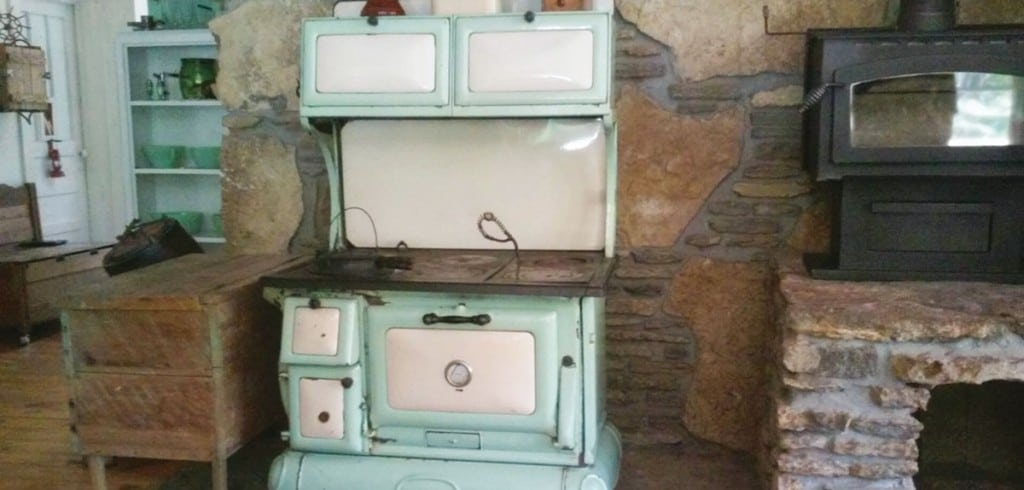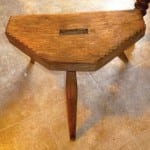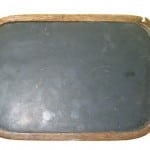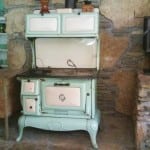This stool came from my grandparents’ home. They were married around 1910. Can you tell me its use and the purpose of the hole through the seat? Thank you very much.
Annette
Dear Annette,
Three-leg stools made of sturdy hardwood were often used while milking cows. You grandparents’ stool is crudely built but sturdy, and the crimped detail on the edge is a nice handmade feature. Their stool with only three legs provided a steady seat on uneven floors where four legs might be difficult to level. The hand-hold in the center made the stool easy to move from place to place with only one hand.
Considering the whole range of buying and selling venues like antique shows, antique malls, online sales and personal property liquidation sales, stools like this are priced and sell for anywhere from $25 to $115.
I bought this chalkboard at a yard sale about five years ago when I was 10. It has a small metal tag that reads “Edwin Young patented April 8, 1856, Philadelphia.” Can you please tell me anything about it? Thank you!
Logan
Logan,
It’s always nice to have a clear label. United States patent records, available online, state Edwin Young was awarded patent No. 14,624 on April 8, 1856, for an Improved Slate Frame to manufacture his “slate frame made of a single piece of wood provided with a groove to receive the edge of the slate and bent so as to fit it with the ends fastened together.”
Classrooms in the 19th century utilized handheld writing devices in the form of slate, a natural material made from shale. Students used soft stones to write on their slates during class. Because slate chips and splits easily, various methods of framing the boards were developed.
The continuous piece of wood surrounding your slate is distinctive. It must be made of hickory due to the bent form. Hickory is the only wood that can be steamed and maintain a form or shape. Your slate board has a more natural, hand-hewn look, unlike later frames with thin, mitered-edge strips of wood. Similar slates without the label sell for $12 to $55.
From the picture you sent, I can detect only a small splinter of damage to this approximately 150-year-old slate, but it is certainly still functional. Our modern, hand-held writing devices are replaced or updated regularly. Although it seems the older an item is the more value it should have, older is not better, just older, in today’s secondary market. Pop culture dictates our tastes in this 21st century, not age or even rarity.
My husband’s uncle gave us this Windsor wood cook stove in 1990. All six eyes work, and the oven thermostat is accurate. We have used it in our home many winters just for the novelty. It saved the day one Thanksgiving when my electric stove went out! Best turkey ever! I have designed my kitchen around this beautiful color green and would like to know the value of this piece.
Thank you,
Kathy Jo, Primm Springs
Kathy Jo,
Although similar stoves are offered for $400 to $2,000, they seem to actually change hands at around $500. Most are not far from working condition because a wood stove, after all, is a simple appliance and can be restored with a cleaning and search for missing parts.
Communicate with people who are trying to live off the utility grid. They may be trying to get off the grid for economic reasons, so an asking price less than $1,000 might be more appealing.






